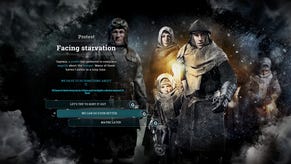Metrics the key to successful social game design - Zynga
Brian Reynolds explains why taking note of your customers behaviour can help engagement
Metric-driven game design has been a crucial part of the success of Zynga's social games, principally Farmville and Mafia Wars.
That's according to the company's chief game designer, Brian Reynolds, talking at this year's DICE Summit, as he revealed some of the methods that have been utilised in the ongoing development of the games.
He began by noting the differences between social network games versus traditional title development, specifically the cost and time to create products - but also the while a console title might be patched after release, once a social network game is live the ongoing development and evolution of services needs to exist throughout a game's entire lifespan in order to keep people playing.
Therefore the company uses three pillars on which to build experiences - play, express and invest - meaning that users first play the game, then express themselves within the content and finally feel committed to the title through the investment of time.
"It's very important for us to get players to invest in the game," he said, pointing out that unlike boxed product - for which gamers will have parted with enough money to guarantee at least some play time before making a final decision on whether they like the product or not - free-to-play games have a tiny amount of time to pull in a user.
And once players have invested time in the game, the social layers that Facebook brings to the platform enables interaction with "real friends" - unlike many online console games which matchmakes you with people you've never met, or even World of Warcraft (where, says Reynolds, you're more likely to make new friends).
"The thing with Facebook is I've got my friends from high school, college, grad school, previous jobs, people around the industry, relatives, distant relatives, and so on," he explained.
Here the mechanic of virtual goods plays a part, because they help to build a link between the player and their friends, using the game as an interface.
"Why do people pay for virtual goods?" he asked. "They're made of nothing... but we make the link between virtual goods and real social relationships. If you don't understand that you're not going to succeed in social games."
But most importantly is the method of iterating the game's design through the analysis of a user's actions, as metric-driven.
Reynolds explained that there was no rule that said every player of a game had to have the same experience, and that the company regularly split off certain sections of the player base to try out new features.
As an example he cited Mafia Wars, which at one point had seven different tutorial experiences running in parallel, allowing the team to analyse which versions were more accessible to new players.
"We learned all kinds of stuff about what it takes to get somebody to become a regular player," he said. "We went down to three, then one, and that one was totally counter-intuitive to what we thought the tutorial should be like."
Another example was the ad link at the top of the Mafia Wars page, which they'd originally coloured red to tie in with the game's logo - but after some user testing, a pink alternative showed a massively increased click-through rate, hence the company learned through user testing a better way to present its product.
More DICE Summit 2010 content is available in our special event page - with more news and interviews set to publish over the coming weeks.



.jpg?width=291&height=164&fit=crop&quality=80&format=jpg&auto=webp)




